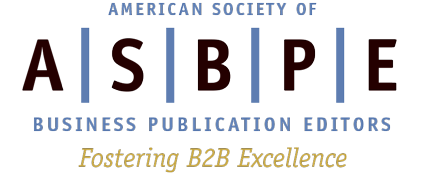Original air date: July 31, 2025
Learn how to make AI a powerful, responsible partner in your research workflow — not just how to prompt AI for research, but also how to ensure your reporting remains ethical, accurate, and grounded in verified facts.
Watch the Recording
(Members only - login required.)
Webinar Details:
How B2B Journalists Can Use AI Tools to Supercharge Reporting
As AI continues to reshape the journalism landscape, one area where it’s proving especially powerful — and complex — is research.
As part of our series on how journalists can use AI effectively, this webinar dives deeper into how B2B journalists and editorial teams can use AI tools to enhance their reporting and research. From analyzing sources to summarizing data-heavy documents and generating background insights quickly, AI can significantly streamline the research process.
But speed isn’t everything. Journalists must approach AI-assisted research with care, curiosity, and a critical mindset. In this session, you’ll learn not just how to use and prompt AI properly for research purposes — but how to interrogate its output, recognize its blind spots, and ensure your reporting remains accurate, ethical, and grounded in verified facts.
Greg Friese, the editorial director at Lexipol Media Group and Timothy Inklebarger, editor at Supermarket News, offer practical advice on how B2B editorial professionals can master using AI for research. Whether you’re working on daily news or enterprise features, this session will equip you with the skills to use AI responsibly and effectively during the research phase of your editorial workflow.
Speakers: Greg Friese, Editorial Director, Lexipol Media Group; and Timothy Inklebarger, Editor, Supermarket News, Informa Connect
Moderator: Davide Savenije, Vice President of Editorial, Informa TechTarget
Who Should Attend:
This webinar is designed for B2B journalists, editors, and content professionals who already understand the basics of generative AI and want to go deeper into using it for reporting and research. It’s ideal for those working in newsrooms, content teams, or freelance settings. Learn how to make AI a powerful, responsible partner in your research workflow.
What You’ll Learn:
- Experiment Broadly, Apply Strategically
Start small and build confidence. Use AI tools to support quick tasks like brainstorming and summarizing before diving into deeper research. - Start with the End in Mind
Define your goal before you start prompting so you can get better results and avoid wasting time. - Prompting as a Process
Think of prompting as a conversation. Start simple, refine as you go, and guide the tool toward useful output. - Critical Thinking Still Wins
Always verify AI responses. Be ready to fact-check, cross-reference, and apply editorial judgment. - Know the Risks, Build Guardrails
Understand and manage risks like hallucinations, bias, and transparency to maintain trust. - Tools and Real-World Use Cases
Join this interactive discussion for real-life use cases, actionable advice on integrating AI, and answers to your questions about ChatGPT, Claude, Perplexity, and more.
This archived webinar is free for ASBPE members.

